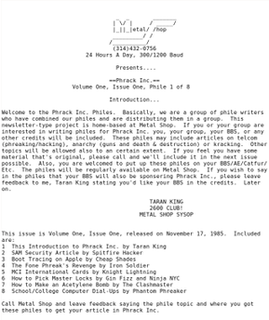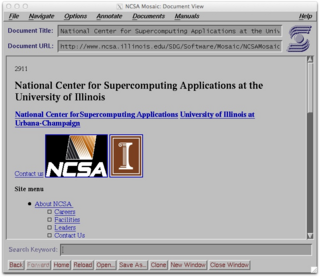Related Research Articles

The Internet is the global system of interconnected computer networks that uses the Internet protocol suite (TCP/IP) to communicate between networks and devices. It is a network of networks that consists of private, public, academic, business, and government networks of local to global scope, linked by a broad array of electronic, wireless, and optical networking technologies. The Internet carries a vast range of information resources and services, such as the inter-linked hypertext documents and applications of the World Wide Web (WWW), electronic mail, telephony, and file sharing.

Integrated Services Digital Network (ISDN) is a set of communication standards for simultaneous digital transmission of voice, video, data, and other network services over the traditional circuits of the public switched telephone network. Work on the standard began in 1980 at Bell Labs and was formally standarized in 1988 in the CCITT "Red Book". By the time the standard was released, newer networking system with much greater speeds were available, and ISDN saw relatively little uptake in the wider market. One estimate suggests ISDN use peaked at a worldwide total of 25 million subscribers at a time when 1.3 billion analog lines were in use. ISDN has largely been replaced with digital subscriber line (DSL) systems of much higher performance.

Lynx is a customizable text-based web browser for use on cursor-addressable character cell terminals. As of 2020, it is the oldest web browser still being maintained, having started in 1992.

Windows 95 is a consumer-oriented operating system developed by Microsoft as part of its Windows 9x family of operating systems. The first operating system in the 9x family, it is the successor to Windows 3.1x, and was released to manufacturing on August 15, 1995, and generally to retail on August 24, 1995. Windows 95 merged Microsoft's formerly separate MS-DOS and Microsoft Windows products, and featured significant improvements over its predecessor, most notably in the graphical user interface (GUI) and in its simplified "plug-and-play" features. There were also major changes made to the core components of the operating system, such as moving from a mainly cooperatively multitasked 16-bit architecture to a 32-bit preemptive multitasking architecture, at least when running only 32-bit protected mode applications.

Phrack is an ezine written by and for hackers, first published November 17, 1985. Described by Fyodor as "the best, and by far the longest running hacker zine," the magazine is open for contributions by anyone who desires to publish remarkable works or express original ideas on the topics of interest. It has a wide circulation which includes both hackers and computer security professionals.

NCSA Mosaic is one of the first web browsers. It was instrumental in popularizing the World Wide Web and the general Internet by integrating multimedia such as text and graphics. It is a client for earlier internet protocols such as File Transfer Protocol, Network News Transfer Protocol, and Gopher. It was named for its support of multiple Internet protocols. Its intuitive interface, reliability, personal computer support, and simple installation all contributed to its popularity within the web. Mosaic is the first browser to display images inline with text instead of in a separate window. It is often described as the first graphical web browser, though it was preceded by WorldWideWeb, the lesser-known Erwise, and ViolaWWW.
Cello is an early, discontinued graphical web browser for Windows 3.1; it was developed by Thomas R. Bruce of the Legal Information Institute at Cornell Law School. It was released as shareware in 1993. While other browsers ran on various Unix machines, Cello was the first web browser for Microsoft Windows, using the winsock system to access the Internet. In addition to the basic Windows, Cello worked on Windows NT 3.5 and with small modifications on OS/2.

Eric Haraldsson, nicknamed Eric Bloodaxe, was a 10th-century Norwegian ruler. It is widely speculated that he had short-lived terms as King of Norway and twice as King of Northumbria.
Phreaking is a slang term coined to describe the activity of a culture of people who study, experiment with, or explore telecommunication systems, such as equipment and systems connected to public telephone networks. The term phreak is a sensational spelling of the word freak with the ph- from phone, and may also refer to the use of various audio frequencies to manipulate a phone system. Phreak, phreaker, or phone phreak are names used for and by individuals who participate in phreaking.
The Conscience of a Hacker is a small essay written January 8, 1986 by a computer security hacker who went by the handle of The Mentor, who belonged to the 2nd generation of hacker group Legion of Doom.
A vertical service code (VSC) is a sequence of digits and the signals star (*) and number sign (#) dialed on a telephone keypad or rotary dial to enable or disable certain telephony service features. Some vertical service codes require dialing of a telephone number after the code sequence. On a touch tone telephone, the codes are usually initiated with the star key, resulting in the commonly used name star codes. On rotary dial telephones, the star is replaced by dialing 11.

Brian K. Vaughan is an American comic book and television writer, best known for the comic book series Y: The Last Man, Ex Machina, Runaways, Pride of Baghdad, Saga, and, most recently, Paper Girls.
Chris Lamprecht is a Texas based software developer. Lamprecht was the original author of ToneLoc, a wardialing program written in the C programming language for the DOS operating system. He was the first employee and lead software architect for indeed.com, a metasearch engine for job listings.
Chris Goggans, who used the name Erik Bloodaxe in honor of the Viking king Eric I of Norway, is a founding member of the Legion of Doom group, and a former editor of Phrack magazine. Loyd Blankenship, aka The Mentor, described Goggans/Bloodaxe as "the best hacker I ever met".

Bruce Fancher is a former computer hacker and member of the notable Legion of Doom hacker group. He co-founded MindVox in 1991 with Patrick K. Kroupa.

Osulf was high-reeve of Bamburgh and ruler of Northumbria. Sometimes called "earl", he is more surely the first recorded high-reeve of Bamburgh and the man who, after assisting in the death of its last independent ruler Erik Bloodaxe, administered the York-based Kingdom of Northumbria when it was taken over by the Wessex-based King Eadred of England in 954.
The Legion of Doom (LOD) was a hacker group founded by the hacker Lex Luthor after a rift with his previous group called the Knights of Shadow. LOD was active from the 1980s to the early 2000s, although was most active from 1984–1991 and at the time was considered to be the most capable hacking group in the world. Today, Legion of Doom ranks as one of the more influential hacking groups in the history of technology, appearing to be a reference to the antagonists of Challenge of the Super Friends.

Lumen Technologies is an American telecommunications company headquartered in Monroe, Louisiana, that offers communications, network services, security, cloud solutions, voice, and managed services. The company is a member of the S&P 500 index and the Fortune 500. Its communications services include local and long-distance voice, broadband, Multi-Protocol Label Switching (MPLS), private line, Ethernet, hosting, data integration, video, network, public access, Voice over Internet Protocol (VoIP), information technology, and other ancillary services. Lumen also serves global enterprise customers across North America, Latin America, EMEA, and Asia Pacific.
Carol Rumens FRSL is a British poet.

DR-WebSpyder is a DOS web browser, mail client and operating system runtime environment that was developed by Caldera UK in 1997. It was based on the DR-DOS operating system and networking components from Novell as well as the Arachne web browser by Michal Polák of xChaos software. The system was designed to run on low-end desktop systems, but being able to boot and execute from disk as well as from ROM or network, it was also tailored for x86-based thin clients and embedded systems with or without disk drives. Using the web browser as its principal user interface, it could be also used for kiosk systems and set-top boxes. Named Embrowser, it has been ported to Linux in 1999 and was called Embedix Browser since 2000.
References
- ↑ Bloodaxe, Erik, ed. (15 April 1995). "What is an Internet Outdial?". Phrack . Vol. 6 no. 47. File 6. Retrieved 2018-02-19.
- ↑ Bloodaxe, Erik, ed. (15 April 1995). "What are some Internet Outdials?". Phrack. Vol. 6 no. 47. File 6. Retrieved 2018-02-19.
| This article related to telephony is a stub. You can help Wikipedia by expanding it. |